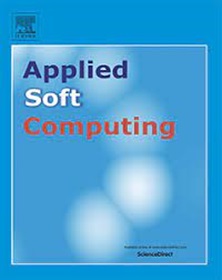Meta-ensemble learning with adaptive sampling for imbalanced medical Raman spectroscopy data
IF 7.2
1区 计算机科学
Q1 COMPUTER SCIENCE, ARTIFICIAL INTELLIGENCE
引用次数: 0
Abstract
Raman spectroscopy combined with artificial intelligence algorithms for disease diagnosis has been widely used in the medical field with great potential. However, since the low prevalence of certain diseases makes it difficult to obtain disease samples, the problem of medical Raman spectroscopy data imbalance occurs in disease diagnosis, where the model tends to predict samples in most classes and has a lower diagnostic accuracy for the disease class, which may delay the patient’s treatment or lead to an increased risk of misdiagnosis. In this study, we propose the MAEL model, which utilizes meta-learning ideas to automatically learn a sampling strategy from the data and adaptively resample the query set iteratively, to tackle the problem of unbalance in medical Raman spectroscopy data. We apply the model for the first time to unbalanced medical Raman spectral data to improve the unbalanced data distribution of the spectral data, and use integration learning to integrate all sampling results during model training to improve model performance. We used three metrics, AUC-PRC, G-mean, and F1-score values, to evaluate the performance of the model and compared it with six traditional data balancing methods. The experimental results show that the MAEL model achieves significant improvements on various medical Raman spectroscopy datasets, with maximum improvements of 0.364, 0.563, and 0.587 for the AUC-PRC, G-mean, and F1-score values, respectively. This study provides an effective way to solve the data imbalance problem in medical spectroscopy and has potential applications.
不平衡医学拉曼光谱数据的自适应采样元集成学习
拉曼光谱结合人工智能算法进行疾病诊断,在医学领域得到了广泛的应用,具有很大的潜力。然而,由于某些疾病的低患病率使得疾病样本难以获得,因此在疾病诊断中出现了医学拉曼光谱数据不平衡的问题,模型往往预测大多数类别的样本,对疾病类别的诊断准确率较低,这可能会延误患者的治疗或导致误诊的风险增加。在本研究中,我们提出了MAEL模型,该模型利用元学习思想从数据中自动学习采样策略,并自适应迭代地重新采样查询集,以解决医学拉曼光谱数据的不平衡问题。我们首次将该模型应用于不平衡的医学拉曼光谱数据,以改善光谱数据的不平衡数据分布,并在模型训练过程中使用积分学习对所有采样结果进行整合,以提高模型性能。我们使用三个指标AUC-PRC、G-mean和F1-score值来评估模型的性能,并将其与六种传统的数据平衡方法进行比较。实验结果表明,MAEL模型在各种医学拉曼光谱数据集上取得了显著的改进,AUC-PRC、G-mean和F1-score值的最大改进分别为0.364、0.563和0.587。该研究为解决医学光谱数据不平衡问题提供了有效途径,具有潜在的应用前景。
本文章由计算机程序翻译,如有差异,请以英文原文为准。
求助全文
约1分钟内获得全文
求助全文
来源期刊

Applied Soft Computing
工程技术-计算机:跨学科应用
CiteScore
15.80
自引率
6.90%
发文量
874
审稿时长
10.9 months
期刊介绍:
Applied Soft Computing is an international journal promoting an integrated view of soft computing to solve real life problems.The focus is to publish the highest quality research in application and convergence of the areas of Fuzzy Logic, Neural Networks, Evolutionary Computing, Rough Sets and other similar techniques to address real world complexities.
Applied Soft Computing is a rolling publication: articles are published as soon as the editor-in-chief has accepted them. Therefore, the web site will continuously be updated with new articles and the publication time will be short.
 求助内容:
求助内容: 应助结果提醒方式:
应助结果提醒方式:


